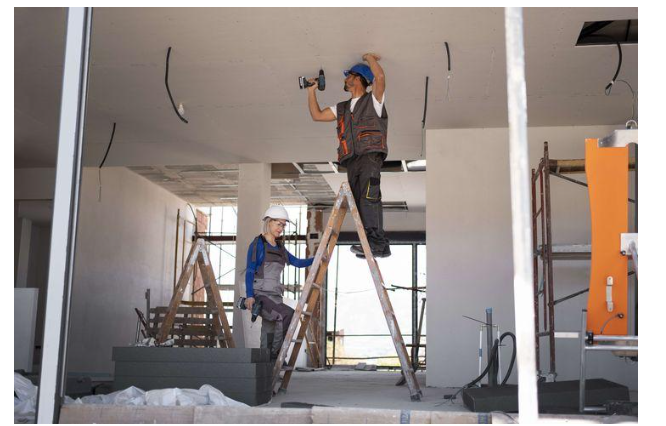How To Choose The Best Sump Pump For Your Basement
When you’re faced with the threat of water coming up from below, where do you turn? For homes in flood prone areas, those battered by heavy rains or threatened by high water tables, a sump pump could be the answer.
These devices help protect your home by ensuring that the rising water is pumped harmlessly away before it gets to your floor. They’re simple, not overly expensive and very effective at dealing with rising water. There’s a few different types out there, so how do you know which of these home-saving devices is right for you?
What Is A Sump Pump?
A sump pump does exactly what it sounds like: it pumps water out of a sump. They consist of a few simple components:
- A pit (‘the sump’)
- A float switch that activates the pump
- A motor
- An impellor
- A discharge line.
A pit is dug under your basement floor which fills with water as the ground water level rises (say after heavy rain). This then triggers the float switch, activating the motor and spinning the impellor. This creates an area of low pressure within the sump, drawing the rising water out into the discharge line.
This makes them an excellent way of reliving pressure on your basement slab. They’re particularly suited to homes which face problems with high water tables, groundwater swells after heavy rain or anywhere prone to flooding.
Of course, whenever there’s extreme weather, which is when sump pumps are most useful, there’s a risk of power cuts. Many systems include a battery backup or even a secondary pump for these eventualities. While not strictly necessary and an extra cost, it’s generally worth the investment for the peace of mind a backup brings.
Whichever you opt for, you’ll need to find someone to provide professional sump pump installation. This isn’t a DIY task and getting the experts in ensures that your home is as protected as possible.
Types Of Pump
While they all share the same basic mechanisms, there are three categories of sump pump out there that are worth considering. Each comes with its own set of pros and cons.
Submersible Sump Pumps
As the name suggests, these pumps sit in the sump itself, meaning they have to be able to work underwater.
Pros
Submersible pumps, because they’re locked away in the sump itself, are very quiet. They’re ideally suited to homes with moderate to heavy inflow and deal with water quickly and efficiently. Perhaps their biggest draw is that they take up very little room in your basement itself. This means that homeowners can enjoy both the protection of a pump and the practical space of their basement at the same time.
Cons
On the downside, they are significantly more pricey to buy, install and, thanks to being hard to access, maintain. If and when something does go wrong, repairing it is a much larger job than other models.
Pedestal Pumps
Unlike submersible pumps, a pedestal pump keeps the majority of the mechanics on the surface. The motor is mounted above the sump itself, keeping it nice and dry.
Pros
Pedestal pumps, thanks to keeping their inner workings and moving parts dry, tend to be long-lived. They’re also cheaper to buy, install and maintain and generally require less intervention.
Cons
There’s no getting away from it: a surface mounted pump can be a noisy thing when working. They can be a bit less efficient in terms of moving water quickly too. This means that they’re less suited for dealing with rapidly rising or particularly large problems. They also take up a good bit more room in your basement.
Battery-Powered Backup Pumps
Unfortunately, sump pumps require electricity to work. When is your power supply most likely to be interrupted? During the very time that a pump is most likely to be needed: storm season. Likewise, floods are likely to knock out your power.
Luckily, battery backups are a thing. These extra systems are worth installing to ensure that your pump is working when you need it most.
Key Considerations When Choosing A Sump Pump
Before you can go about selecting someone for your professional sump pump install, it’s worth knowing a little about what to look for. Before making any purchase, consider the following features and if in any doubt, ask your installers for advice:
Pump Capacity
The amount of water that a pump can move (measured in Gallons Per Hour, often written GPH) is the primary consideration. This flow rate determines how efficiently the pump can move water away from your home.
Consider how much rainfall is typical for your area then try to beat that to head off freak events.
Horsepower
Just like your car, the power of the sump pump’s motor is measured in horsepower. The higher the number, the more powerful the machine. A higher horsepower pump can deal with more water and do it faster than a lower powered model.
For a normal residential setting, it’s common to see 1/2HP or 3/4HP units and typical backup units are 1/3HP. If you live in a particularly wet place, you may need to mix and match these pumps.
Head Pressure (Lift Capacity)
To remove the water, the pump first needs to lift it upwards, through the discharge line. The depth of your basement, location of the pump and a few other factors determine what you should look for here.
Durability and Build Material
Sump pumps come in both plastic and cast-iron models. Plastic is cheaper upfront but not as long-lived as metal.
You’ll have to weigh out initial outlay vs on-going replacement costs for yourself. There are arguments in both directions, but generally it makes sense to pay upfront and avoid problems down the line.
Power Source
There are two potential power sources for your backup pump: electric and water. Water is generally only used for back-up pumps.
Which is most suitable will depend on your area and availability of resources.
Features To Look For
Sump pumps come in all kinds of configurations and with all sorts of bonus features. Here are a few worth considering:
- Automatic float switches for peace of mind
- Alarm systems that warn you if the pump fails or is struggling to deal with the amount of water
- Battery backups and secondary power sources
- Check valves to avoid water flowing back into the sump, improving efficiency
- Water-level monitoring, linked to mobile apps on your phone.
Maintenance
Once you’ve made your selection, you’ll want to keep your sump pump in good working order for as long as possible. With a good maintenance routine, you can expect somewhere between 7-10 years of regular use from a good quality pump.
Regular inspections, cleaning out the sump pit and testing the float switch all pay dividends in terms of heading off problems.
If you notice that rust is forming, strange noises or that your pump seems to be turning on more than it should, it’s probably time to consider repair or replacement.




